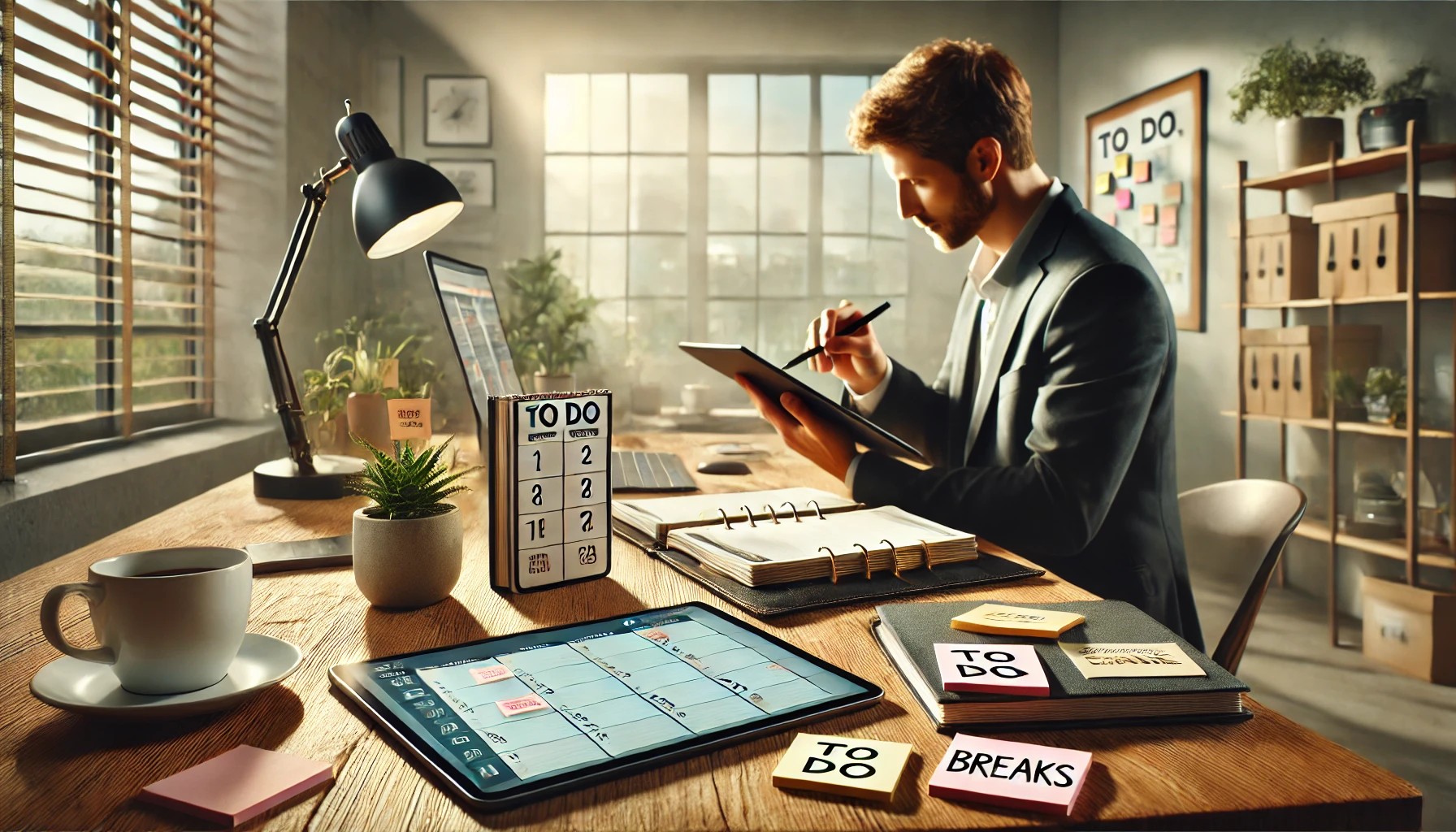When you’re just starting your own business, your routine can feel… chaotic. One day you’re focused and productive — the next, you’re overwhelmed and unsure where to begin. With no boss, no set schedule, and a thousand tasks competing for attention, how do you stay on track?
The answer: a clear, flexible routine.
You don’t need a perfect plan or a strict system. You just need habits that help you focus, avoid burnout, and make consistent progress.
In this article, you’ll learn how to build a daily routine that works for you — one that supports your energy, goals, and lifestyle.
Why Routines Matter for Entrepreneurs
Having a routine isn’t about being rigid — it’s about creating structure that gives you freedom.
A good routine helps you:
- Start the day with clarity and intention
- Avoid wasting time deciding what to do next
- Stay focused on what actually grows your business
- Reduce stress and mental fatigue
- Protect time for rest and personal life
Especially in the early stages of entrepreneurship, routines create stability in the middle of chaos.
1. Start With Your Priorities
Before creating a routine, get clear on what really matters in your business right now.
Ask yourself:
- What tasks actually bring in income or clients?
- What activities build brand awareness or long-term growth?
- What admin or support tasks do I need to maintain?
Example:
- High-impact tasks: Content creation, client work, sales conversations
- Support tasks: Email, organization, scheduling
- Personal care: Breaks, meals, movement, rest
Your routine should revolve around what moves the needle — not just what keeps you busy.
2. Choose Your Working Hours
One of the best parts of entrepreneurship is flexibility. But you still need boundaries for your time.
Decide:
- What time do I start and end work?
- What days are my “on” days and rest days?
- When do I do focused work vs. meetings or content?
Tip: You don’t need to work 9–5. You just need to be consistent.
Example:
🕘 9:00 AM – 12:00 PM → Deep work (writing, projects)
🕛 12:00 PM – 1:00 PM → Lunch & break
🕐 1:00 PM – 3:00 PM → Admin, social media, emails
🕒 3:00 PM – 5:00 PM → Calls or planning
3. Use Time Blocks to Stay Focused
Time blocking is a powerful way to keep your day structured without micromanaging every minute.
How it works:
- Divide your day into blocks (30, 60, or 90 minutes)
- Assign one type of task to each block
- Stick to that task during the block — no multitasking
Examples of blocks:
- Content creation
- Client work
- Learning or skill development
- Breaks or walking
- Inbox or admin
Time blocks help you avoid context switching and boost your productivity.
4. Start the Day With a Mini CEO Check-In
Begin your day with 10–15 minutes to check in with yourself and your business.
Try this:
- Review your top 3 priorities
- Check your calendar or tasks
- Look at sales or messages
- Set a mini goal or intention
This simple practice helps you start with purpose — not panic.
Bonus tip: Write your top tasks on paper. Physically crossing them off feels good.
5. Automate Low-Energy Tasks
Don’t waste mental energy on things that can be automated or batched.
Some ideas:
- Use a content scheduler (like Buffer or Later)
- Set email auto-responders for common questions
- Batch create content for the week on Mondays
- Use templates for proposals, contracts, or invoices
Save your creative energy for the work that only you can do.
6. Add Breaks and “Buffer Time”
Working nonstop isn’t sustainable — and it’s not productive either.
Be sure to include:
- Short breaks every 90 minutes
- A full lunch break (away from your screen)
- 15-minute buffers between meetings or tasks
- One no-work afternoon or evening per week
Burnout starts when your routine leaves no room to breathe. Protect your energy as much as your to-do list.
7. End the Day With a Shutdown Ritual
Don’t just close your laptop and walk away. Give your day a sense of closure.
Ideas for a shutdown routine:
- Review what you completed
- Prep your to-do list for tomorrow
- Reflect: What went well? What needs adjusting?
- Tidy your desk
- Say “done” out loud (yes, it actually helps)
This small habit helps you mentally disconnect and enjoy your evening without unfinished thoughts.
8. Use Tools That Keep You Organized
You don’t need 10 apps to stay productive. Just choose 1–2 tools you’ll actually use.
Popular options:
- Google Calendar – for time blocking and scheduling
- Notion – for planning, tracking, and goal-setting
- Trello – for visual task management
- ClickUp – for more complex project organization
- Pen & paper – still a favorite for many entrepreneurs
Choose the system that feels natural. Simplicity = sustainability.
9. Be Flexible, Not Rigid
Your routine should support your life — not control it.
Some days will go off track. That’s okay.
Instead of thinking:
- “I failed my schedule today.”
Try:
- “I did what I could today. I’ll adjust and keep going tomorrow.”
The most effective routines are flexible, forgiving, and adaptable to real life.
10. Review and Adjust Weekly
Every week, take 20–30 minutes to reflect:
- What worked in your routine?
- What didn’t feel good or productive?
- Where did your time go?
- What do you want to do differently next week?
This habit keeps your routine aligned with your season, energy, and goals.
